Colonial America
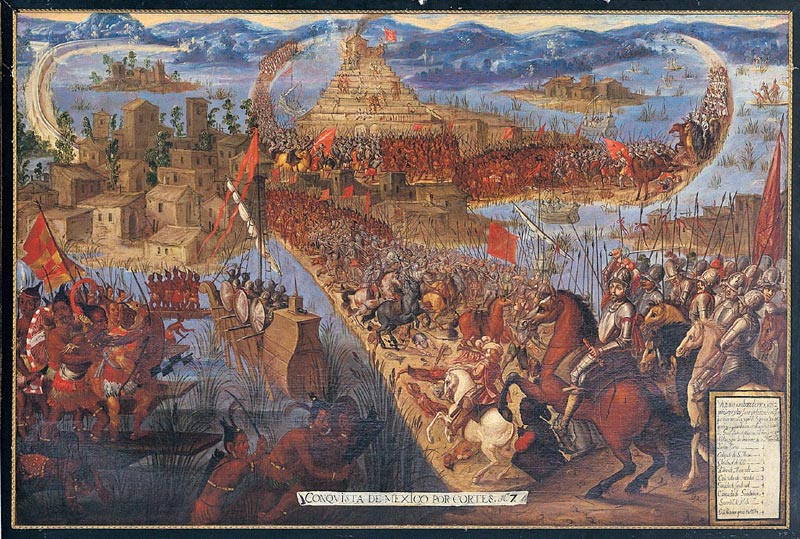
This painting, “The Conquest of Tenochtitlan,” represents the 1521 Fall of Tenochtitlan in the Spanish conquest of the Aztec Empire. Image Credit: Rare Book and Special Collections Division, Library of Congress
During the 1500s, Europeans explored North and South America. Some nations, including the Spanish, began to establish settlements.

In the 1600s, many European countries began to establish settlements along the Atlantic coast of North America. British, French, Dutch and Swedish colonists left their home countries and sailed across the Atlantic Ocean in search of riches, freedom, safety and new lives.
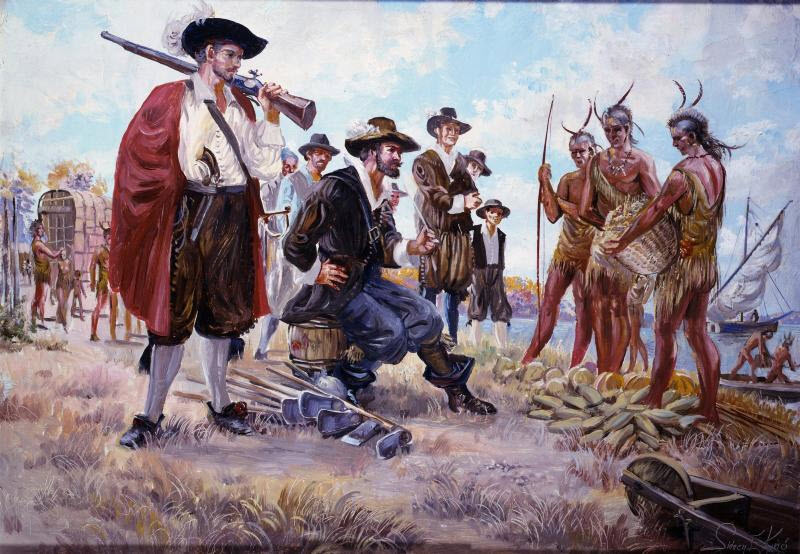
This painting depicts Captain John Smith trading with Native Americans in Virginia. Image credit: National Park Service, Colonial National Historical Park, Jamestown Collection
Some settlements were created to trade with the Native Americans for goods such as fur.
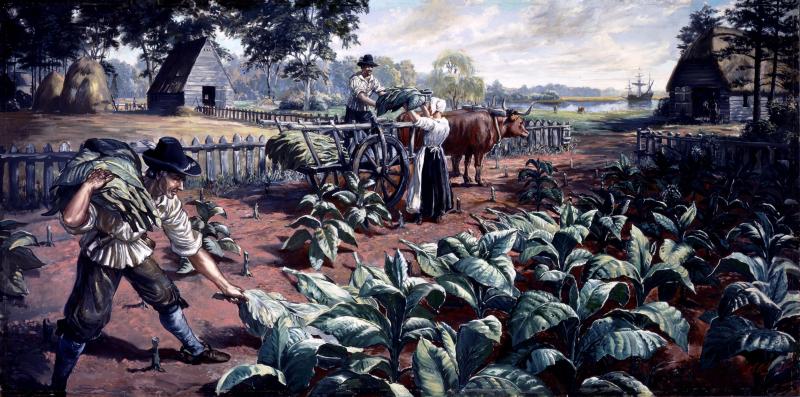
This painting depicts colonists engaged in tobacco production. Image credit: National Park Service, Colonial National Historical Park, Jamestown Collection
Other settlements were created as farming communities where colonists planted food crops, such as corn and wheat, and cash crops like tobacco.

This painting represents the transition of Jamestown from a wilderness fort to a city in the early 1620s. Image credit: National Park Service, Colonial National Historical Park, Jamestown Collection
Colonists came for many different reasons. Some colonists hoped to find gold quickly and return to their countries as wealthy people. Others sought new opportunities and a chance to make a living. Some looked for the freedom to practice their own religions.
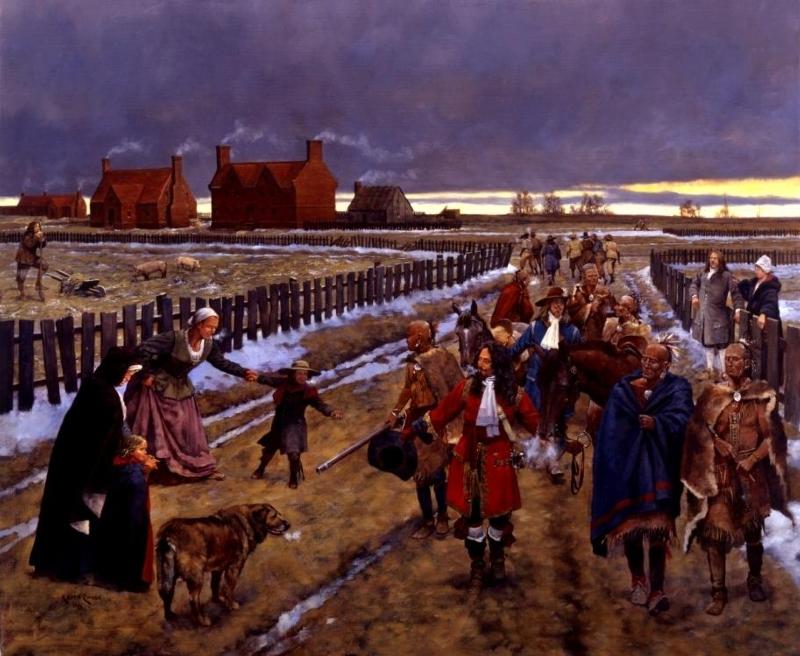
This painting depicts Jamestown in the winter of 1690. Image credit: National Park Service, Colonial National Historical Park, Jamestown Collection
All of the settlements faced challenges. Disease killed many colonists. Settlements often faced hostile Native Americans. Some colonists chose poor locations for their settlements, in areas that were too cold or too damp, or had little fresh water. Some settlements succeeded and some failed, with the colony either dying out or colonists deciding to return to their home countries.
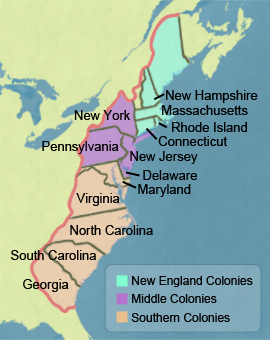
The settlements that succeeded grew, with more and more colonists joining them. The success of settlements also encouraged colonists to form new settlements in the area. Gradually, Great Britain formed 13 colonies along the Atlantic coast. By the 1700s, these colonies decided to fight for their independence from Great Britain. The Revolutionary War led to the creation of the new United States of America.
(The map shows colony borders as of 1763.)